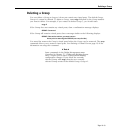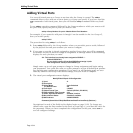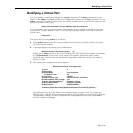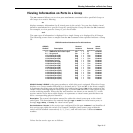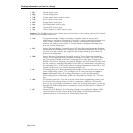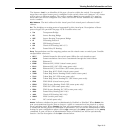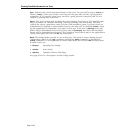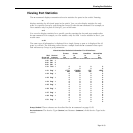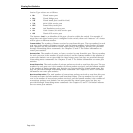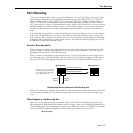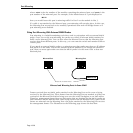
Viewing Detailed Information on Ports
Page 19-51
The Instance (Inst) is an identifier of this type of service within the switch. For example, if
more than one virtual router port is configured in the switch, then each “instance” of a router
will be given a different number. The service number (Srvc) is port-specific. If a port has
more than one service configured on it, then each service will be identified by a different
service number.
MAC Address. The MAC address for this virtual port. Each virtual port is allocated a MAC
address.
Prt. The bridging or routing protocol supported by this virtual port. Descriptions of these
protocol types are provided on page 19-48. Possible values are:
•
Tns Transparent Bridge
•
SR Source Routing Bridge
•
SRT Source Routing Transparent Bridge
•
IP IP Routing Protocol
•
IPX IPX Routing Protocol
•
CIP Classical IP Routing (RFC 1577)
•
FR Frame Relay IP Routing
Encp. Encapsulation used for outgoing packets on this virtual router or switch port. Possible
encapsulation values are:
•
DFLT Default format for this switch port (differs for each interface type)
•
SWCH Frame translations have been customized through the Switch menu
•
ETH2 Ethernet II
•
ESNP Ethernet 802.3 SNAP (virtual router ports)
•
ELLC Ethernet 802.3 LLC (IPX router ports only)
•
8023 Ethernet 802.3, Novell Raw (IPX router ports only)
•
8025 Token Ring 802.5 SNAP (virtual router ports)
•
TSRS Token Ring Source Routing SNAP (virtual router ports)
•
TLLC Token Ring LLC (IPX router ports only)
•
TSRL Token Ring Source Routing LLC (IPX router ports only)
•
FDDI FDDI SNAP (virtual router ports)
•
FSRS FDDI Source Routing SNAP (IPX router ports only)
•
FLLC FDDI LLC (IPX router ports only)
•
FSRL FDDI Source Routing LLC (IPX router ports only)
•
1490 Frame Relay Routing (RFC 1490)
•
1483 Classical IP Routing (RFC 1483)
•
SNAP SNAP (switch ports only)
•
LLC LLC (switch ports only)
Admin. Indicates whether the port is administratively Enabled or Disabled. When Enabld, the
port can transmit and receive data as long as a cable is connected and no physical or opera-
tional problems exist. When Disabld, the port will not transmit or receive data even if a cable
is connected and the physical connection is operational. You can set the Administrative Status
during the port configuration phase of the crgp command, the addvp command, or the modvp
command. A port can have an Administrative Status of Enabled, but still be operationally
Inactive. See the description of the Oper column below.



